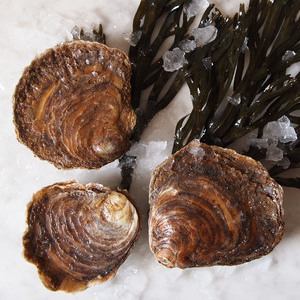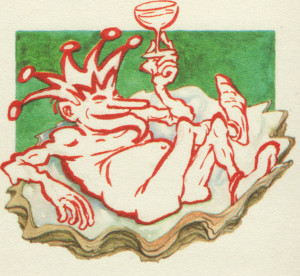ABV: 4.5% / 8.5%
Origin: Newham, Kent, England / Bergen op Zoom, Noord-Brabant, Netherlands
Website: www.scheldebrouwerij.com / http://whitstablebrewery.co.uk
Date: 9 October 2000
Two more reviews from the archive written for the pioneering Oxford Bottled Beer Database (OBBD). This was my first attempt at a comparative tasting, but to fit the OBBD format it was originally written up as two separate, linked entries. I’ve made some minor edits to the text so it reads as a single piece, but otherwise left it uncorrected, so please read it in that historical spirit.
Swale Brewery had a rather unsettled history. It was founded in Milton Regis in 1995 by homebrewer John Davidson, with the assistance of microbrewing pioneer Rob Jones of Pitfield’s and Dark Star fame. It expanded in 1997 to Sittingbourne, moved again in 2000 to Newham when it was briefly known as the Tun, Vine and Press. In 2001 it moved again to a farm at Grafty Green near Maidstone.
Production of Oyster Stout led to a relationship with the Whitstable Oyster Fishery, who bought out the business when it was on the point of closure in 2003 and renamed it the Whitstable Brewery even though it was now some distance from Whitstable. In this guise it’s become one of the most successful and consistent of Kent micros, with excellent branding and presentation. Oyster Stout is still very much a part of the range, though with some tweaks to the recipe.
As recounted in the preamble to my review of Lamme Goedzak, Scheldebrouwerij has also undergone some changes since 2000, moving from the Netherlands to Belgium. Oesterstout remains a popular fixture in the range, though the brewery no longer claims to filter it through oyster shells.
Though some of the more imaginative breweries have experimented with using oysters themselves in the brewing of stout, most oyster stouts are so called in deference to the time-honoured affinity between the shellfish, which are notoriously difficult to match with wines, and dry stouts of the Irish-style roasted barley variety, Guinness being the classic pairing.
In recent years Marstons of Burton have done well with their take on the style, but it’d take a brave bivalve to find its way that far up the Trent. Swale, the Kentish micro best known for Indian Summer Ale, are more appropriately located in Sittingbourne: it’s just down the Thames estuary from Whitstable, famed these past centuries for oyster beds which are now sadly largely farmed out.
Not so far east from here, across the channel, is another estuary, that of the Scheldt, whose banks seem to provide most of the Low Countries’ mussel supply. Oysters are found here too, and on the north bank at ‘s-Gravenpolder in Zeeland, another micro, the Scheldebrouwerij, also offers an appropriate stout. They don’t bung the flesh in the mash here either, but they do filter the beer through the shells. I thought the two, both bottle-conditioned, would make an interesting comparison, even without the benefit of oysters.
Swale’s offering, the weaker of the two, was tasted first. This is an excellent dark beer, subtle and rich but not over-thick or heavy in the slightest. It pours beautifully dark and oily with a cappuccino head, giving up a crisp aroma with a clear, slightly burnt roastiness and bitter chocolate, but also the scent of rust and an appropriately salty tang. The texture is light, with a marked spritziness without being over-gassy, lacking the smooth creaminess sought after by its Irish cousins.
The palate is full of tasty chocolatey malt, with a slight milkiness and a range of other subtle hints, including tar and, far back, some tangy, plummy fruit. Hops develops in a good drying finish, and in the aftertaste that slightly meaty saltiness noted in the aroma returns, alternating with firm but not overstated hops.
The Schelde example, which is filtered through oyster shells, was brewed at the behest of the Bierkoning beer shop in Amsterdam. It was one of the rarities on sale at the Great British Beer Festival 2000. With a very Dutch flourish, the bottle replaces the olde worlde image of basket-laden oyster fisherman on Swale’s label with a cheerfully grinning naked Neptune indulging in a glass of ale.
It’s a much stronger beer too — nearly twice the strength (though considering some varieties of Guinness reach 8%, not uncharacteristically strong for the style) — and though it doesn’t look quite as oily on the pour, appears just as beautifully black in the glass, with a creamier and everlasting but similarly coloured cappuccino head. The aroma is very different and much more assertive: intensely malty and sweet, a smell familiar to anyone who grew up in a brewing town.
There’s roastiness there (the recipe includes 900EBC roasted malt as well as caramalt and Munich malt) but little trace of bitter coffee or chocolate. The condition is livelier but given a certain smoothness through the creamy head, and the palate is predominantly malty, with some rich chocolate (Dutch?) and burnt fruit, with a definite Trappist-style sugariness that I’ve noted in other beers from this brewery. This latter characteristic is soon balanced by rapidly developing hop bitterness, slightly more intense and tangy than in the Kentish offering.
The hops linger long in the finish, becoming slightly earthy with very dry plain chocolate hints, and there’s a sweet fruitiness with a splash of alcohol that is almost liqueur-like. Overall, an interesting take on the style, with that sweetness marking it out from its British counterparts. However, it lacks the meaty saltiness that gives the Swale entrant its extra interest, and enables the latter to stand up well against even such a big, strong brew at this one.







Leave a Reply